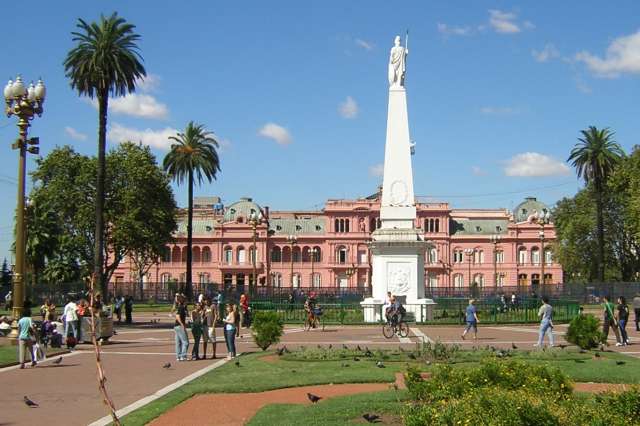Buenos Aires Real Estate - Español
Monserrat was the first "barrio" in the City of Buenos Aires and it is named after Nuestra Señora De Montserrat (Our Lade from Montserrat). It also used to be called "Barrio del Tambor" (Neighborhood of the Drum), because of the drums that used to be played by black people in the area. Different groups of drum player were formed with names such as Cabunda, Banguela, Mondongo y Angola. Although there are very few black people left in Argentina, they left the memory of their cheerful carnivals, where they used to dance "Candombe."
Montserrat has been a very large part of history of the City of Buenos Aires and the country, something that can be easily observed in the fact that most of the areas buildings and parks have been declared Historical Monuments. Originally it was a Spanish area, part of their colony, whose immigrants mainly built their houses on what is today the Avenues Belgrano and Rivadavia, and the Avenida de Mayo (May Avenue). The celebrations of "La Reconquista" (The Reconquering) and "La Defensa de la Ciudad" (The Defence of the City) in the year of 1806 and 1807, were both held on the "Plaza Mayor" (Biggest Square), later called "Plaza de la Victoria" (Victory Square), until 1810 when it was the spot where the "Revolucion de Mayo" (May Revolution) took place.
In 1811, the "Piramide de Mayo" (May Pyramid) was constructed as the first historical monument of Buenos Aires. One year later the statue was declared a National Historical Monument. It can be seen in the Plaza de Mayo (May Square) and is a small, 13 meters tall obelisk. In 1856 a replica of the "Estatua de la Libertad" (Statue of Liberty) was added to its peak.
The "Plaza de Mayo" is called by many the "Plaza de las Protestas" (Protestants Square). This is where people that don't agree with the government congregate to make their claims in front of the "Casa Rosada" (Pink House), that can be found on the west side of the "Plaza de Mayo." The building is pink in color and has a Renaissance style. It has been the headquarters of the Argentinean government since 1810. In 1942 the building was declared a National Historical Monument. The decision to paint it pink was made by Domingo Faustino Sarmiento (former president of the Nation) to symbolize the union of the political sectors up until then; Red had been used as a symbol of the people supporting Juan Manuel de Rosas (Governor of Buenos Aires), while white was the color used by those who were against him during his period, thus reaching this mixture: pink.
The building is heterogeneous because it has been reconstructed in many different periods. It is made up of three floors, over the west side and four over the east side. On the roof of the Pink House is the National Flag.
The 8th of September it's the day of Monserrat.
- Rentals and Sales of Houses, Apartments, Offices, Town House, and other Properties in Monserrat.
- Real Estate Monserrat.
- Sales, rentals, short term, commercial, student accommodation, holiday lets and apartment share.
- Owner reltals, Owner Sale,
- Monserrat limits with the following areas: San Telmo, Constitución, San Cristobal, Abasto, Barrio Norte, Balvanera, Micro Centro, and Puerto Madero.


















